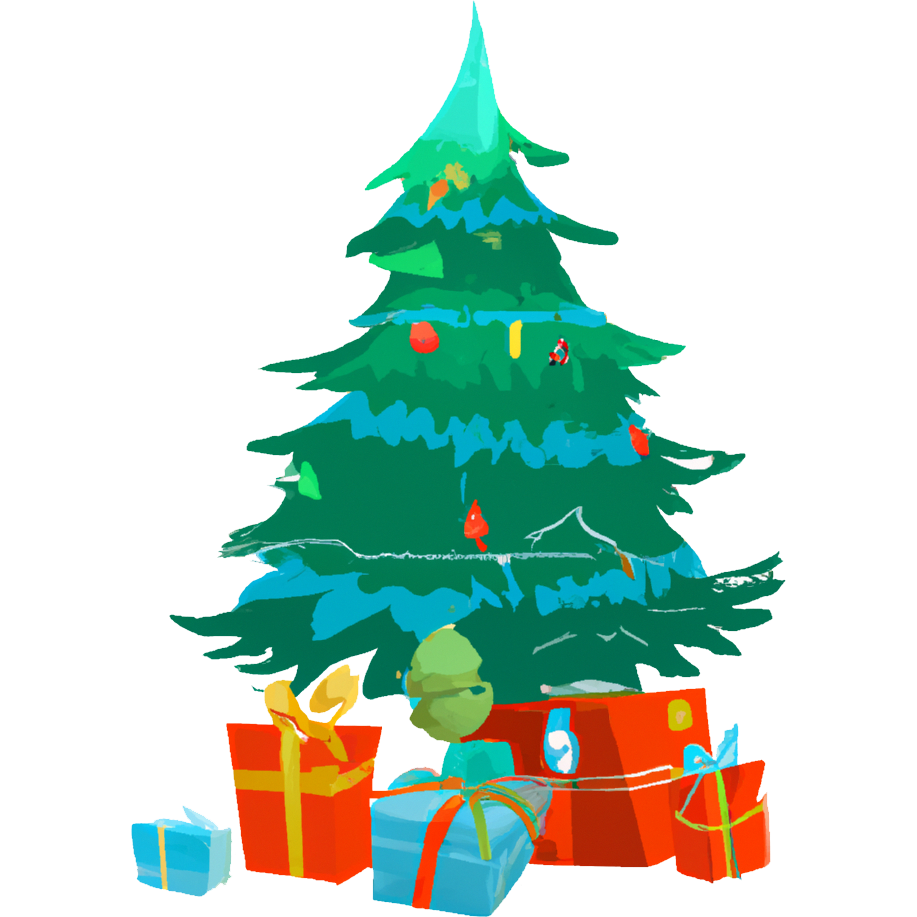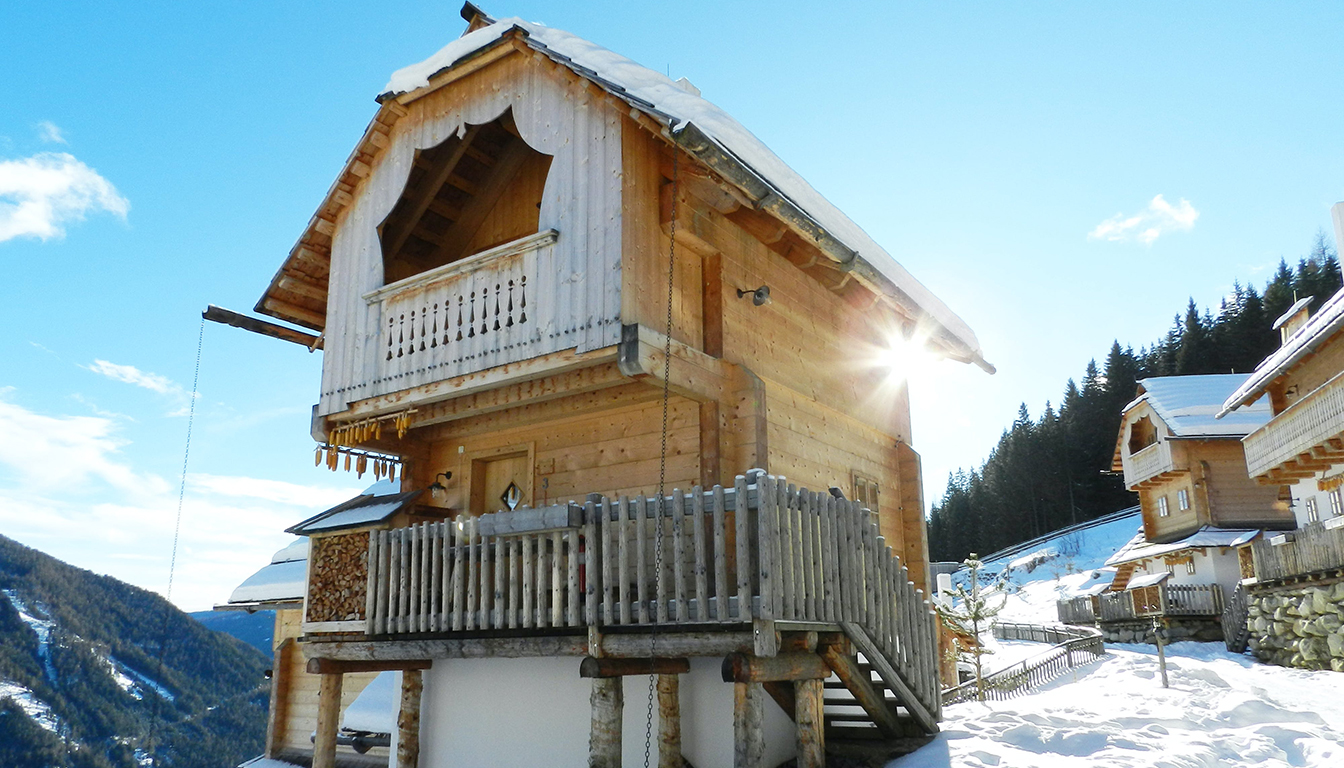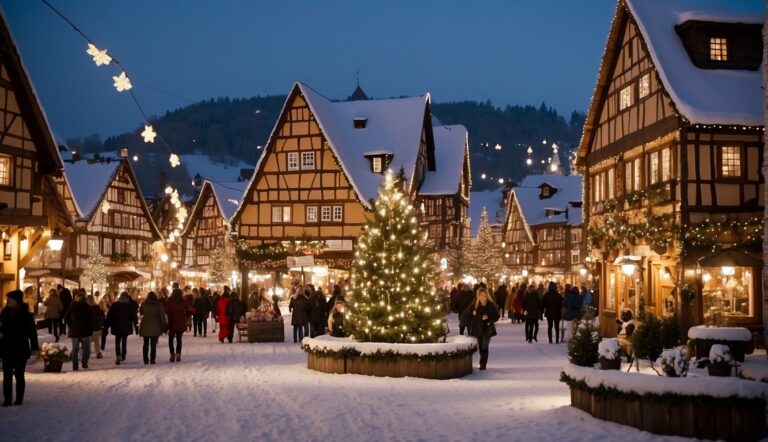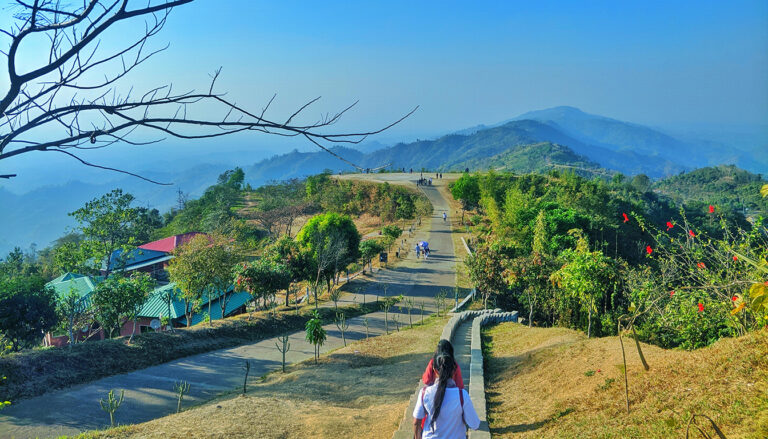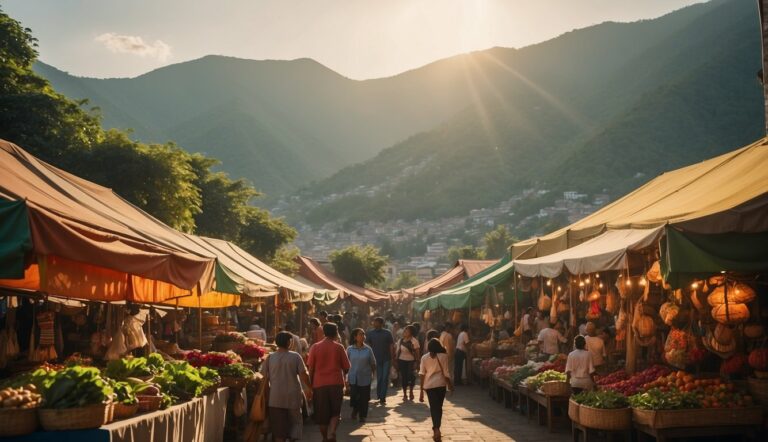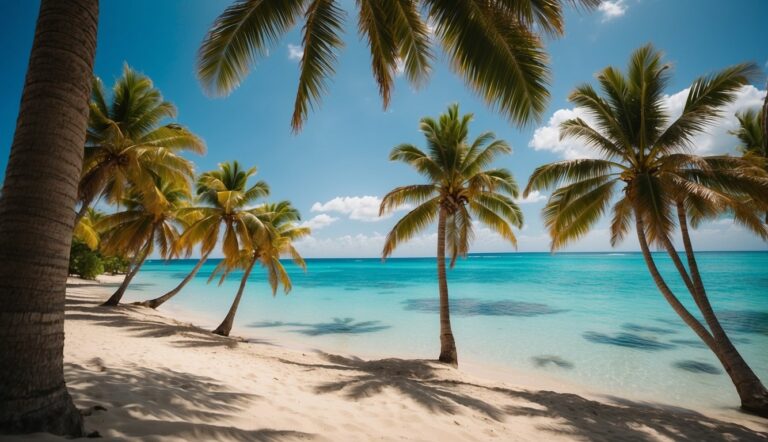Christmas in Austria – Traditions, Markets, and Magical Moments
Christmas in Austria is a vibrant and heartfelt celebration that intertwines deep-rooted traditions with a sense of communal joy and spirituality. The festive season here is steeped in customs that have been cherished and preserved across generations. Christmas time here has all the warm fuzzy feelings you’d expect to see, with snow, Christmas Markets and endless stunning mountains in the background.
During the Advent period, which Austrians regard as the most peaceful time of the year, families engage in a variety of activities that lead up to Christmas Day. These include baking biscuits, putting up decorations, and singing traditional carols. The lighting of the Advent wreath, with its evergreen branches and festive ribbons, symbolizes the passing of the four weeks of Advent in the lead-up to Christmas.
A unique tradition in Austria is the appearance of both St. Nicholas and the Krampus on the 6th of December. While St. Nicholas rewards well-behaved children with sweets and gifts, the Krampus, a more daunting figure rooted in folklore, is said to visit those who have not been as good. This blend of benevolence and folklore encapsulates the duality of warmth and caution that characterizes the season.
Historical Significance of Christmas in Austria
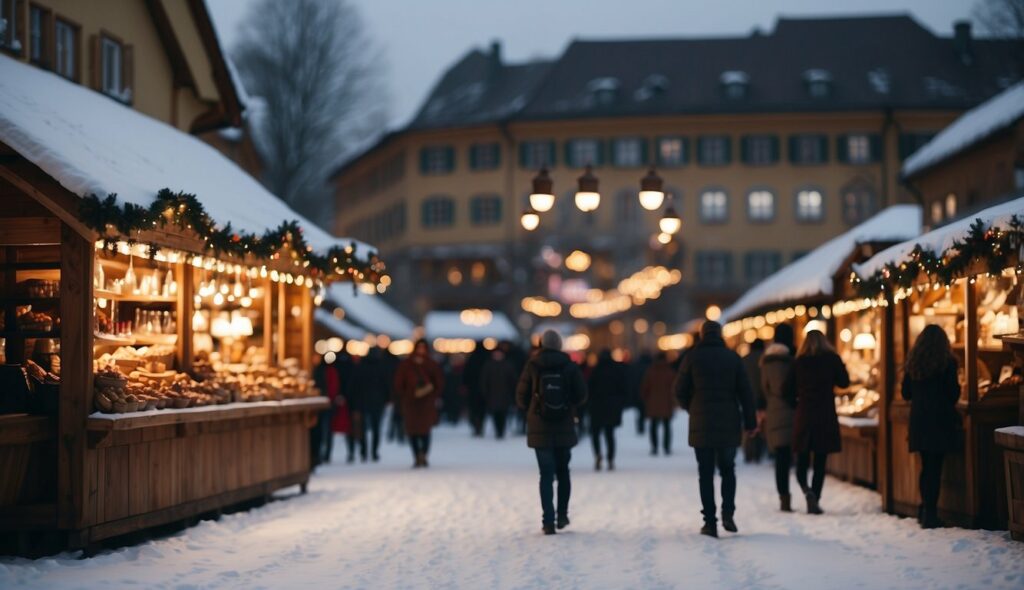
Christmas in Austria is deeply rooted in the country’s traditions and history. The celebration of Christmas here is a blend of long-standing customs and religious significance, reflecting Austria’s culture and beliefs.
Origins and Development Christmas celebrations in Austria date back to the late Middle Ages, with the festivity originally being a solemn religious affair. Over time, it evolved into a mixture of both sacred and communal celebrations. In 1782, an ordinance by Emperor Joseph II influenced private exhibitions of nativity scenes in the Salzkammergut region, marking the beginning of a notable tradition.
Silent Night
The history of Christmas in Austria is closely tied to the carol Silent Night, originally titled “Stille Nacht! Heilige Nacht!” This renowned carol was first performed in 1818 in the hamlet of Oberndorf, adding a significant contribution to the global Christmas music repertoire from Austria.
- Traditions Preserved
Austrians have maintained a rich array of holiday customs:- Baking cookies and various Christmas treats.
- Putting up Advent wreaths and calendars.
- Singing traditional carols.
St. Nicholas and Krampus The feast day of St. Nicholas on December 6th brings a unique tradition where St. Nicholas rewards good children while his companion, Krampus, addresses those who have been less well-behaved. This reflects an older folklore aspect of Austria’s Christmas celebrations and the preservation of local mythical figures.
The historical significance of Christmas in Austria is marked by the integration of customs and practices that have been cherished and carried on through generations, continually shaping the country’s distinctive yuletide festivities.
Traditional Christmas Celebrations
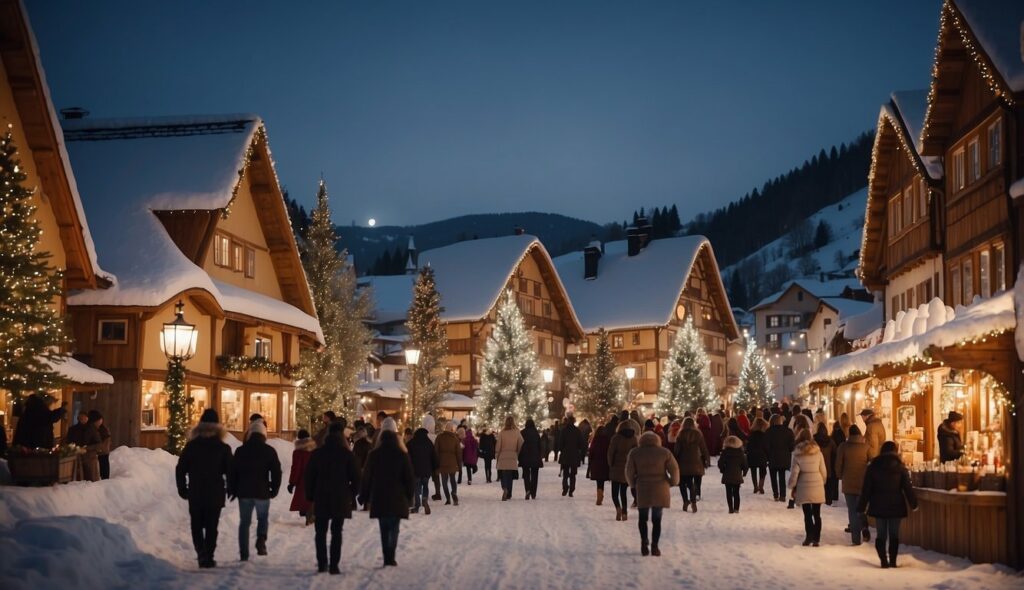
Austrian Christmas traditions are rooted in centuries-old customs, combining religious significance with communal festivities. From the start of Advent to the revelries on Christmas Eve, these traditions encapsulate the spirit of the season in Austria.
Advent in Austria
Advent marks the beginning of the Christmas season in Austria. It starts on the fourth Sunday before Christmas Day, a period of anticipation and preparation. Austrians often create or purchase an Advent calendar, counting the days until Christmas with little doors concealing treats or pictures. Additionally, many families craft an Advent wreath with four candles, lighting one additional candle each Advent Sunday.
Christmas Markets
Christmas markets (Christkindlmärkte) are a highlight of the festive season in Austria. These markets typically open in late November and feature a variety of stalls selling Christmas decorations, gifts, and traditional Austrian foods. Noteworthy markets include the Vienna Christmas Market held in front of City Hall and the historic markets in Salzburg, where one can enjoy hot mulled wine (Glühwein) and gingerbread (Lebkuchen).
Saint Nicholas Day
Celebrated on December 5th and 6th, Saint Nicholas Day is a cherished tradition. Children in Austria receive gifts from Saint Nicholas, a figure similar to Santa Claus. Accompanying Saint Nicholas is the frightening Krampus, a mythical creature that punishes naughty children. This day underscores the balance of reward and admonition in Austrian folklore.
Christmas Eve Customs
In Austria, Christmas Eve, known as Heiliger Abend, is the climax of the Christmas celebrations. Families come together to decorate the Christmas tree, often with real candles that are lit in the evening. The night brings a solemn visit to church for Midnight Mass. Afterwards, families return home to share a meal and exchange gifts, imbuing Christmas Eve with both spiritual and familial warmth.
Austrian Christmas Cuisine
In Austria, Christmas is a time when traditional flavors come to life, with a range of baked delights and hearty meals marking the season’s festivities.
Christmas Baking
Austrians cherish the Advent season, which heralds a time of warm ovens and the aroma of spices filling the air. Central to the baking tradition are cookies known as Lebkuchen, which are gingerbread-like treats spiced with cloves, ginger, cinnamon, and nutmeg. Vanillekipferl, crescent-shaped biscuits flavored with vanilla and dusted with powdered sugar, are another beloved staple.
Kletzenbrot, a dense fruit bread incorporating dried pears (Kletzen), nuts, and spices, is particularly noteworthy. It is often made in advance to allow the flavors to develop. Stollen, a German import that has found its way into Austrian traditions, is a yeast bread filled with marzipan, dried fruit, and nuts, and is typically enjoyed during the Christmas season.
Christmas Day Feasts
On Christmas Eve, tradition dictates a lighter meal, often Fried Carp served with a side of potatoes and roasted vegetables, commemorating a time of fasting followed by feasting.
Christmas Day itself is generally marked by more sumptuous fare. One can expect dishes such as Roast Goose or Duck with red cabbage and dumplings to grace the table. Weihnachtspunsch, a warm and sweet Christmas punch made with red wine, spices, tea, and a splash of stronger spirits, is a festive beverage enjoyed during the holiday meals.
The sweet end to the Christmas meal often features Apple Strudel, a quintessential Austrian dessert with spiced apples wrapped in flaky pastry, commonly served with a generous helping of vanilla sauce.
Christmas Decorations and Crafts
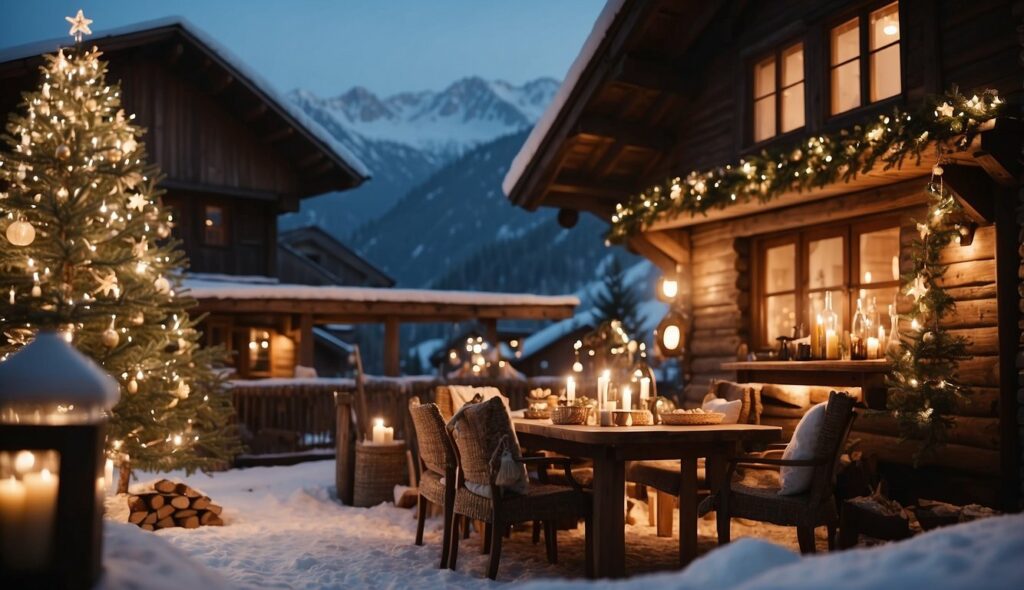
In Austria, Christmas decorations and crafts are a blend of tradition and artistry, reflecting the nation’s cultural heritage and festive spirit.
Nativity Scenes
Nativity scenes, known as “Krippen”, are a central part of Austria’s Christmas decor. These elaborate displays recount the story of Jesus’ birth and are often handcrafted with meticulous attention to detail. They range from simple wooden figures to intricate landscapes featuring lights and moving parts.
- Materials Used: Wood, clay, paper, and sometimes, intricate metalwork.
- Locations: Displayed in homes, churches, and public spaces.
Tree Decorating Traditions
The Christmas tree, or “Christbaum”, holds a special place in Austrian homes. Adorned with candles, sparkling ornaments, and sweets wrapped in foil, the tree becomes a centerpiece for the holiday.
- Typical Ornaments: Hand-painted eggs, golden nuts, and mouth-blown glass figures.
- Lighting: Real candles or electric lights, symbolizing hope and perpetuating an age-old tradition.
Regional Variations of Christmas
In Austria, Christmas customs vary greatly across different regions, each with its unique traditions that enrich the festive season.
Tyrolean Traditions
In the Tyrol region, rustic and ancient practices shape the Christmas vibe. Local artisan crafts, like hand-carved nativity scenes, are prominent here. Residents often partake in “Anklöpfler”, traditional caroling, which involves groups going door-to-door, singing and sometimes playing music through the Advent season.
Salzburg Festivities
Salzburg is known for its UNESCO-listed Silent Night chapel, where the famous Christmas carol originated. Festivals here combine sacred music with folklore, like the eerie Krampus runs, where costumed figures accompany St. Nicholas on 5th and 6th December, rewarding the good children and warning the naughty ones.
Viennese Christmas Markets
Vienna boasts perhaps the most famous Christmas markets (Christkindlmärkte) in all of Austria. Key spots include the market in front of City Hall (Rathaus) and the historic Schönbrunn Palace. Craftsmanship and local culinary delights like Viennese sausages and warm spiced wine (Glühwein) are hallmarks of these bustling Yuletide bazaars.
Modern Christmas in Austria
In Austria, Christmas remains a time steeped in tradition, yet it embraces modern festivities with a distinctive charm. Austrian cities, from Vienna to Innsbruck, adorn their streets with twinkling lights, while Christmas markets invite locals and tourists alike with their enchanting displays.
Christmas Markets:
Markets are a cornerstone of the festive season. They offer a variety of:
- Handcrafted gifts
- Seasonal treats like Lebkuchen (gingerbread)
- Warm drinks, such as Glühwein (mulled wine)
Decorations:
Homes and public spaces feature:
- Advent Wreaths: Typically, they have four candles, lit progressively each Sunday before Christmas.
- Nativity Scenes: Ranging from simple to elaborate, these are common in local churches and family homes.
Advent Season:
Leading up to Christmas, Austrians partake in:
- Baking cookies, including traditional Vanillekipferl (vanilla crescent cookies)
- Singing Christmas carols, a mix of timeless and modern tunes
- Attending special Advent concerts, often held in churches or community centers
Christmas Eve Traditions:
Celebrations peak on December 24, when families gather for:
- A festive meal, usually with a fish dish as the focal point
- Exchanging of gifts, where the Christkind (Christ Child) is thought to deliver presents to children
- Midnight Mass, which many attend to celebrate the religious aspect of the holiday
The influence of technology and global culture is palpable, with younger generations integrating new practices into the holiday. Social media shares and online shopping are incorporated, complementing rather than overshadowing traditional celebrations. Thus, Austria maintains a delicate balance between its cherished customs and contemporary adaptations during the Christmas season.
